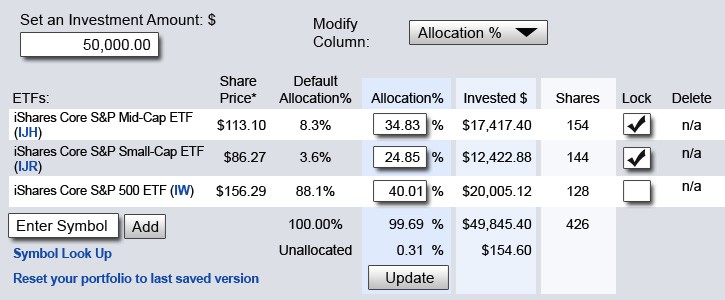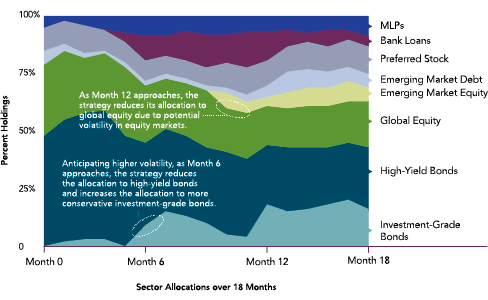Fidelity Learning Center What are MortgageBacked Securities
Post on: 4 Август, 2015 No Comment

Please see the Investor’s Guide to MBS and CMOs for important information
How they work
Pass-Throughs
In a pass-through MBS, the issuer collects monthly payments from a pool of mortgages and then passes on a proportionate share of the collected principal and interest to bondholders. Pass-through MBS generate cash flow through three sources:
- Scheduled principal (usually fixed)
- Scheduled interest (usually fixed)
- Prepaid principal (usually variable depending on the actions of homeowners, as governed by prevailing interest rates)
Collateralized Mortgage Obligations (CMOs)
CMOs are repackaged pass-through mortgage-backed securities with the cash flows directed in a prioritized order based on the structure of the bond. A CMO’s objective is to provide some protection against prepayment risk — above and beyond the protection offered by pass-throughs — while still offering credit quality and high yields.
CMOs take the cash flow from pass-throughs and segregate it into different bond classes known as tranches, which provide a time frame, or window, during which repayment is expected. This gives investors some level of payment predictability. The tranches prioritize the distribution of principal payments among various classes and serve as a series of maturities over the life of the mortgage pool.
CMOs versus traditional mortgage-backed securities
The key difference between traditional mortgage pass-throughs and CMOs is in the principal payment process:
- With traditional MBS each investor receives a monthly pro rata distribution of any principal and interest payments made by homeowners. The bondholder receives some return of principal until final maturity, when homeowners pay the mortgages in the pool in full. This process results in some uncertainty when it comes to the timing of principal return because part or all of the debt can be retired early by the borrower.
- CMOs substitute a principal pay-down priority schedule among tranches for the pro rata process found in pass-throughs, which offers a more predictable rate of principal pay-down.
Types of Issuers
MBS may be backed or issued by entities such as Government National Mortgage Association (GNMA or Ginnie Mae), the Federal Home Loan Mortgage Corporation (FHLMC or Freddie Mac), and the Federal National Mortgage Association (FNMA or Fannie Mae).
Government National Mortgage Association
- The only wholly-owned government corporation backed by the full faith and credit of the U.S. government.
- Purpose is to ensure that mortgage funds are available throughout the U.S.
- Guarantees the timely payment of principal and interest on loans originated through the Federal Housing Association (FHA), the Department of Veterans Affairs (VA), the Rural Housing Service (RHS) and Public and Indian Housing (PIH).
- Instrumental in eliminating differences in the availability of mortgage credit across different regions.
- Securities are available in a variety of maturities.
- Minimum denomination for new issue securities is $25,000, with additional increments of $1,000.
- Investments for less than $25,000 may be available by purchasing securities that are either selling at a discount or have paid back a portion of their principal.

Federal Home Loan Mortgage Corporation
- A publicly owned government-sponsored enterprise not explicitly guaranteed by the U.S. government (see Agency/GSE Product Overview).
- Purpose is to increase the availability of mortgage credit for residential financing.
- Raises most of its funds by developing and maintaining an active secondary market for residential mortgages.
- Issues both mortgage-backed securities and standard corporate bonds, referred to as Government-Sponsored Enterprise (GSE) bonds.
- Securities available in $1,000 increments.
Federal National Mortgage Association
- A publicly owned government-sponsored enterprise (see Agency/GSE Product Overview) not explicitly guaranteed by the U.S. government.
- Purpose is to maintain an active secondary market for mortgages.
- Issues both mortgage-backed securities and standard corporate coupon bonds.
- Securities available in $1,000 increments.
Features and Benefits
Attractive yields
Mortgage-backed securities typically offer yields that are higher than government bonds. Securities with higher coupons offer the potential for greater returns but carry increased credit and prepayment risk, meaning the realized yield could be lower than initially expected. Investors may receive higher payments compared to the income generated by investment grade corporate issues. A portion of these payments may represent return of principal due to prepayments.
Credit quality
Credit risk is affected by the numbers of homeowners or borrowers in the pool of mortgages who default on their loans. Credit risk is considered minimal for mortgages backed by federal agencies or government sponsored enterprises.
Risks
Credit and default risk
While MBS backed by GNMA carry negligible risk of default, there is some default risk for MBS issued by FHLMC and FNMA and an even higher risk of default for securities not backed by any of these agencies, although pooling mortgages helps mitigate some of that risk. Investors considering mortgage-backed securities, particularly those not backed by one of these entities, should carefully examine the characteristics of the underlying mortgage pool (e.g. terms of the mortgages, underwriting standards, etc.). Credit risk of the issuer itself may also be a factor, depending on the legal structure and entity that retains ownership of the underlying mortgages.
Interest rate risk
In general, bond prices in the secondary market rise when interest rates fall and vice versa. However, because of prepayment and extension risk (see below), the secondary market price of a mortgage-backed security, particularly a CMO, will sometimes rise less than a typical bond when interest rates decline, but may drop more when interest rates rise. Thus, there may be greater interest rate risk with these securities than with other bonds.
Prepayment risk
This is the risk that homeowners will make higher-than-required monthly mortgage payments or pay their mortgages off altogether by refinancing, a risk that increases when interest rates are falling. As these prepayments occur, the amount of principal retained in the bond declines faster than originally projected, shortening the average life of the bond by returning principal prematurely to the bondholder. Because this usually happens when interest rates are low, the reinvestment opportunities can be less attractive. Prepayment risk can be reduced when the investment pools larger numbers of mortgages, since each mortgage prepayment would have a reduced effect on the total pool.
Prepayment risk is highly likely in the case of MBS and consequently cash flows can be estimated but are subject to change. Given that, the quoted yield is also an estimate.
In the case of CMOs, when prepayments occur more frequently than expected, the average life of a security is shorter than originally estimated. While some CMO tranches are specifically designed to minimize the effects of variable prepayment rates, the average life is always at best, an estimate, contingent on how closely the actual prepayment speeds of the underlying mortgage loans match the assumption.
Extension risk
This is the risk that homeowners will decide not to make prepayments on their mortgages to the extent initially expected. This usually occurs when interest rates are rising, which gives homeowners little incentive to refinance their fixed-rate mortgages. This may result in a security that locks up assets for longer than anticipated and delivers a lower than expected coupon, because the amount of principal repayment is reduced. Thus, in a period of rising market interest rates, the price declines of MBS would be accentuated due to the declining coupon.
Depending on the issue the secondary market for MBS are generally liquid, with active trading by dealers and investors. Characteristics and risks of a particular security, such as the presence or lack of GSE backing, may affect its liquidity relative to other mortgage-backed securities.
CMOs can be less liquid than other mortgage-backed securities due to the unique characteristics of each tranche. Before purchasing a CMO, investors should possess a high level of expertise to understand the implications of tranche-specification. In addition, investors may receive more or less than the original investment upon selling a CMO.














